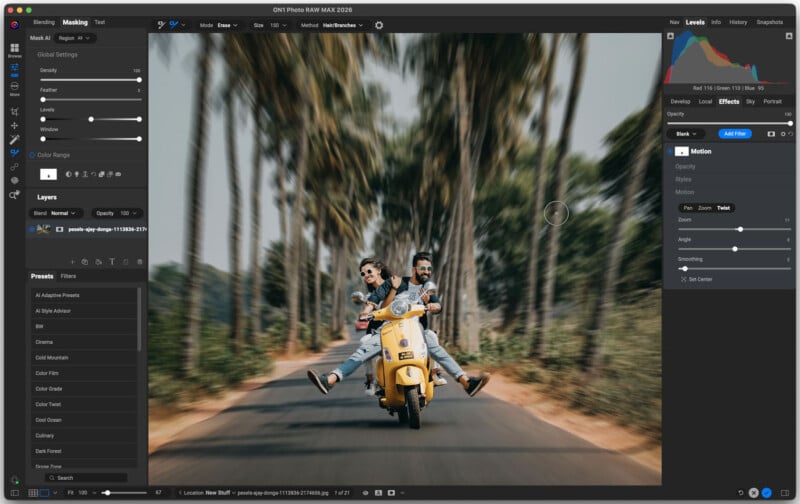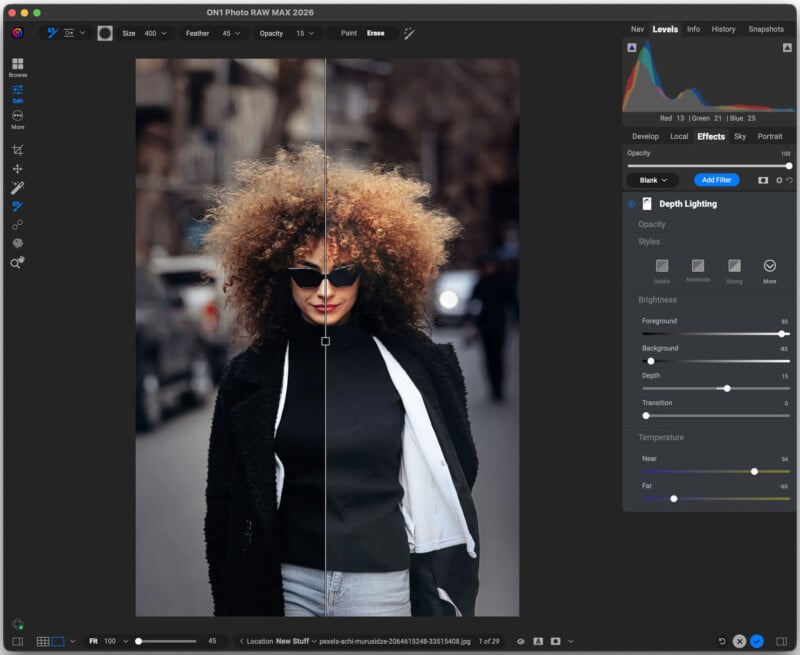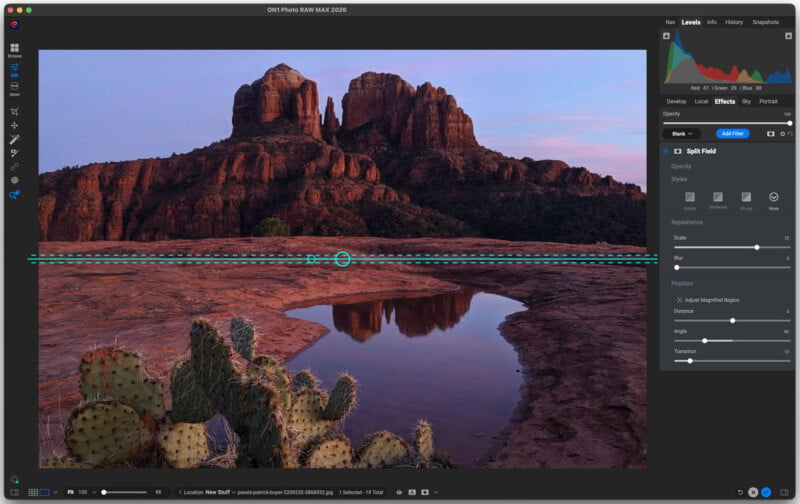ON1 Photo RAW 2026 Has Major AI Masking Improvements
ON1 Photo RAW 2026 is coming this fall with major upgrades, completely new tools, interface improvements, and filters.
ON1 has officially unveiled Photo RAW 2026, the latest version of its all-in-one RAW photo editor, set to release this October. The update introduces significant improvements across three of the software’s most widely used areas: masking, resizing, and creative effects. It also features new tools designed to enhance workflow efficiency, improve compatibility, and expand creative possibilities for photographers at every level. There are even a few features for analog enthusiasts.
![]()
A Major Step Forward in Masking
Masking has been one of ON1’s strongest features in recent years, and Photo RAW 2026 marks its most substantial update since the introduction of Super Select AI. The new system enables photographers to create one-click subject and background masks, and then combine or subtract multiple mask layers within a single edit. This layered approach offers more flexibility when targeting specific elements of an image.
ON1 has also refined its AI-driven edge detection, allowing for the isolation of complex subjects, such as hair, foliage, or fine textures, with fewer manual corrections. The improved precision is expected to save users significant time, especially when working with portraits or outdoor images where subtle details make all the difference.

New Filters Expand Creative Options
Photo RAW 2026 introduces four brand-new filters: Depth Lighting, Split Field, Double Exposure, and Motion, all designed to expand what photographers can achieve directly within the software. Depth Lighting enables users to add cinematic lighting effects with natural falloff, simulating studio-style setups directly on the RAW file. Split Field offers a modern approach to graduated filters, allowing for more creative exposure balancing across different areas of the frame. Double Exposure opens the door to artistic blends of multiple images, while the Motion filter applies realistic motion blur, giving static scenes a sense of energy and movement.
Beyond the new filters, ON1 has added a favorites system and improved search functionality, making it easier to access commonly used tools within the Effects module. The company has also introduced a set of “starting point” presets, giving users an accessible way to begin their edits with popular looks and workflows already in place.



Resize AI Integrated Into the Core
For many photographers, ON1’s standalone Resize AI software has been a go-to solution for enlargements and upscaling. With Photo RAW 2026, this technology is now fully integrated into the main application. The update features two new AI models tailored for distinct workflows. The Highest Quality Model prioritizes maximum detail and is particularly well-suited for tasks such as restoring old photographs, enlarging AI-generated images, or producing large-format prints. The Standard Model, on the other hand, emphasizes speed and efficiency, making it ideal for batch processing or handling files that are noisy or compressed.
This integration eliminates the need to move between separate applications, streamlining the editing process and ensuring that photographers can complete their entire workflow within Photo RAW itself.
Workflow and Usability Enhancements
In addition to its headline features, ON1 Photo RAW 2026 delivers a series of workflow improvements. A new Negative Mode automatically inverts film scans while applying color correction, making it easier for analog photographers to digitize and edit their negatives. The update also introduces native grayscale support, allowing for more accurate handling of black-and-white images from legacy digital cameras or scanned film.
User interface improvements aim to make the editing experience more customizable. Flexible panel docking and adjustable workspaces give photographers the ability to design their editing environment around their personal preferences. The Perspective Tool has also been upgraded, now offering independent horizontal and vertical adjustments with automatic scaling to maintain image proportions.
Finally, ON1 has expanded its support for the latest camera models from Sony, Fujifilm, Panasonic, and OM System, ensuring that users can take full advantage of the RAW editing capabilities with their most recent gear.

What It Means for Photographers
The launch of ON1 Photo RAW 2026 highlights the company’s ongoing effort to position itself as a serious competitor to Adobe Lightroom and Capture One. For photographers seeking alternatives, the integration of Resize AI and its expanded masking capabilities is a clear differentiator, offering features that often require plugins or third-party tools in competing software.
Where Lightroom continues to dominate with its cloud ecosystem and Capture One appeals to tethered studio shooters, ON1’s focus has been on providing a complete, self-contained editing solution. The emphasis on inclusive onboarding, AI-driven tools, and creative effects gives it particular appeal to photographers who want powerful editing without managing multiple subscriptions or juggling between different applications.
For professionals, the refinements in masking and perspective correction may help streamline high-volume workflows, while hobbyists and enthusiasts will likely benefit most from the new creative filters and simplified presets. As AI-driven tools become increasingly standard across the industry, ON1 is betting that automation paired with customization can help it stand out in a crowded field.
Recognizing that many photographers approach ON1 Photo RAW as an alternative to Adobe Lightroom or Capture One, the company has added a new first-run onboarding experience. This feature is designed to help new users become familiar with the software quickly, offering guided introductions and workflow suggestions tailored to those migrating from other editors. The goal is to reduce friction for first-time users while highlighting the unique strengths of ON1’s all-in-one approach.
Pricing and Availability
ON1 Photo RAW 2026 will be released in October. Customers who pre-order will receive immediate access to Photo RAW 2025 and a complimentary upgrade to the new version upon its launch. The software will be offered both as a standalone editor and as the MAX Edition, which includes plugin support for Photoshop, Lightroom Classic, Capture One, and other editing platforms. A fully functional 30-day free trial will also be available for those who want to test the software before committing.
Image credits: ON1